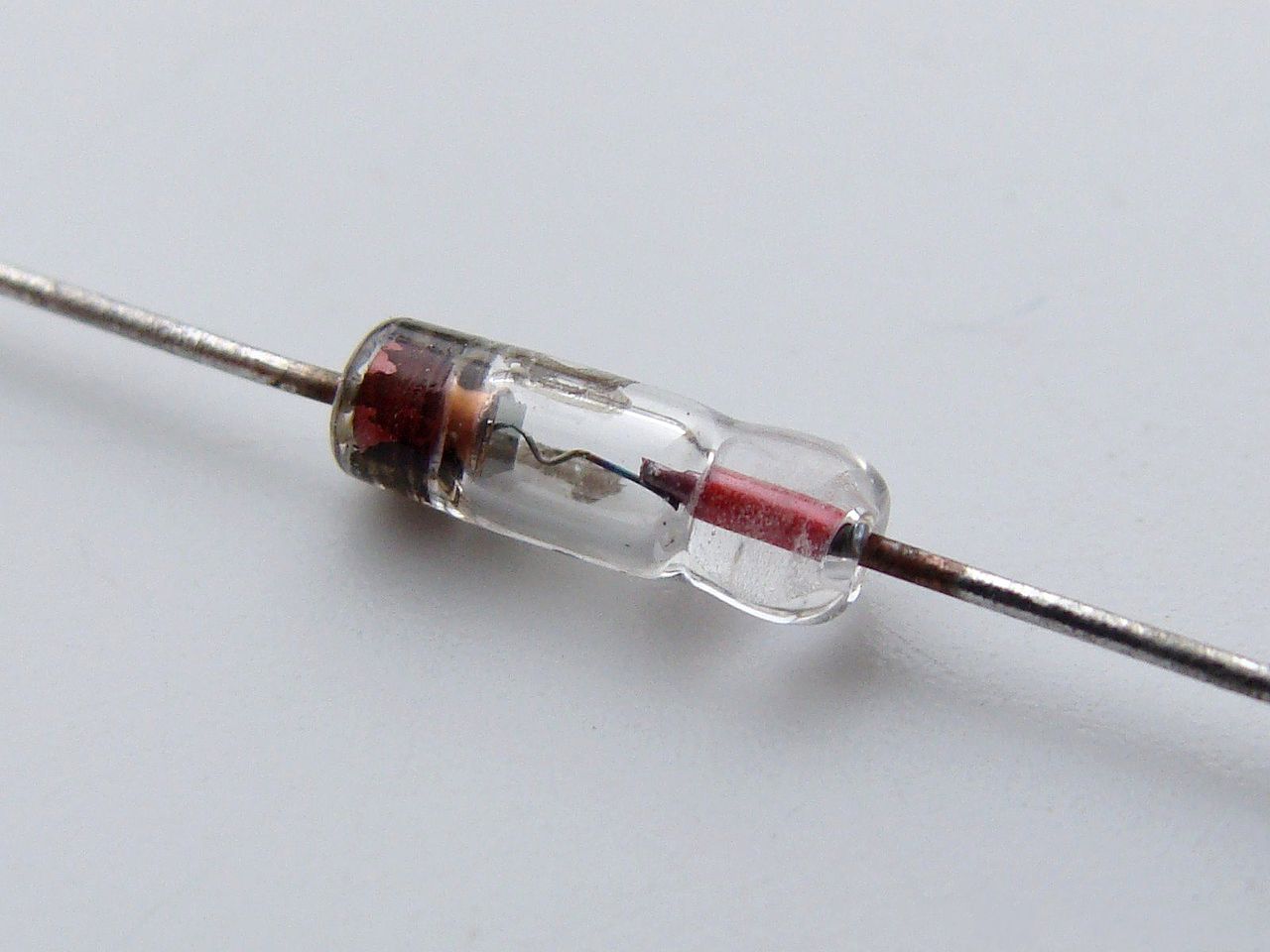A diode is a two-terminal device that allows electric current to flow in only one direction. Thus, it is the electronic equivalent of a check valve or a one-way street. It is commonly used to convert an Alternating Current (AC) into a Direct Current (DC). It is made either of a semiconductor material (semiconductor diode) or vacuum tube (vacuum tube diode). Today, however, most diodes are made from semiconductor material, particularly silicon.

1. Composition
As mentioned earlier, there are two types of diodes: vacuum diodes and semiconductor diodes. A vacuum diode consists of two electrodes (cathode and anode) placed inside a sealed vacuum glass tube. A semiconductor diode comprises p-type and n-type semiconductors. It is, therefore, known as a p-n junction diode. It is usually made of silicon, but you can also use germanium or selenium.
2. How Does It Work?
Vacuum Diode
When the cathode is heated by a filament, an invisible cloud of electrons, called space charge, forms in the vacuum. Though electrons are emitted from the cathode, the negative space charge repels them. As electrons can’t reach the anode, no current flows through the circuit. However, when the anode is made positive, the space charge vanishes. As a result, current starts flowing from the cathode to the anode. Thus, electric current within the diode flows only from the cathode to the anode and never from the anode to the cathode.
P-N Junction Diode
A p-n junction diode comprises p-type and n-type semiconductors of silicon. The p-type semiconductor is usually doped with boron, leaving holes (positive charge) in it. The n-type semiconductor, on the other hand, is doped with antimony, adding a few extra electrons (negative charge) in it. So, electric current can flow through both semiconductors.
When you put p-type and n-type blocks together, the extra electrons from the n-type combine with the holes in the p-type, creating a depletion zone without any free electrons or holes. In short, current can no longer pass through the diode.
When you connect the battery’s negative terminal to the n-type silicon and the positive terminal to p-type (forward-bias), current starts to flow as electrons and holes can now move across the junction. However, if you reverse the terminals (reverse-bias), no current flows through the diode because holes and electrons are pushed away from each other, widening the depletion zone. So, just like a vacuum diode, a junction diode can also allow current to pass in one direction only.
3. Function and Significance
Though diodes are one of the simplest components in an electronic circuit, they have unique applications across industries.
AC to DC Conversion
The most common and important application of a diode is the rectification of AC power to DC power. Usually, a half-wave (single diode) or a full-wave (four diodes) rectifier is used to convert AC power into DC power, particularly in household power supply. When you pass AC power supply through a diode, only half the AC waveform passes through it. As this voltage pulse is used to charge the capacitor, it produces steady and continuous DC currents without any ripples. Different combinations of diodes and capacitors are also used to build various types of voltage multipliers to multiply a small AC voltage into high DC outputs.
Bypass Diodes
Bypass diodes are often used to protect solar panels. When the current from the rest of the cells passes through a damaged or dusty solar cell, it causes overheating. As a result, the overall output power decreases, creating hot spots. The diodes are connected parallel to the solar cells to protect them against this overheating problem. This simple arrangement limits the voltage across the bad solar cell while allowing the current to pass through undamaged cells to the external circuit.
Voltage Spike Protection
When the power supply is suddenly interrupted, it produces a high voltage in most inductive loads. This unexpected voltage spike can damage the loads. However, you can protect expensive equipment by connecting a diode across the inductive loads. Depending on the type of security, these diodes are known by many names including snubber diode, flyback diode, suppression diode, and freewheeling diode, among others.
Signal Demodulation
They are also used in the process of signal modulation because diodes can remove the negative element of an AC signal efficiently. The diode rectifies the carrier wave, turning it into DC. The audio signal is retrieved from the carrier wave, a process called audio-frequency modulation. You can hear the audio after some filtering and amplification. Hence, diodes are commonly found in radios to extract the signal from the carrier wave.
Reverse Current Protection
Reversing polarities of a DC supply or incorrectly connecting the battery can cause a substantial current to flow through a circuit. Such a reverse connection can damage the connected load. That’s why a protective diode is connected in series with the positive side of the battery terminal. The diode becomes forward-biased in the case of correct polarity and the current flows through the circuit. However, in the event of a wrong connection, it becomes reverse-biased, blocking the current. Thus, it can protect your equipment from potential damage.
Related Posts:
